- Solar advice hub
- System-size
- Solar panel inverters: the expert guide
Solar panel inverters: the expert guide
Learn about the different types of inverter, what they do, how much they cost, and which one is best for your household.


Why you can trust our content
We know that the solar industry is full of misinformation, but we only use reliable sources, including:
- Our experienced solar experts, installers and system designers
- Our own database of solar & battery system designs
- Authoritative bodies like MCS and the UK government



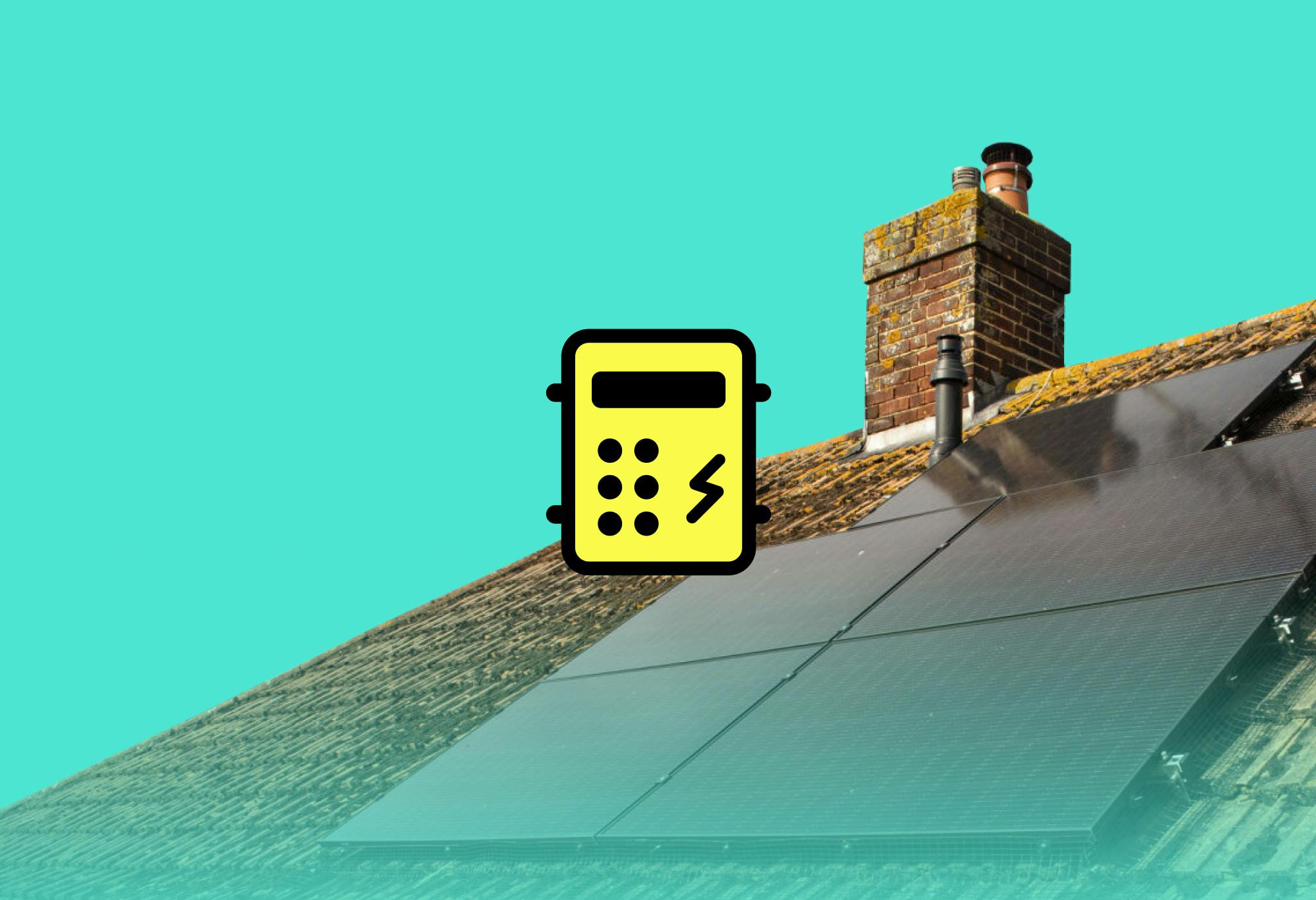
At a glance
Solar panel inverters play a crucial role in any solar panel system, ensuring that the energy harvested from the sun is usable within your home.
As a core component of a solar installation, it's essential to understand how solar inverters work, as well as the factors to consider when choosing one.
In this guide, we’ll explain how an inverter works, how much they cost, which type you should get, and what to expect once you’ve had it installed.
To find out how much a solar & battery system could save you on your energy bills, just answer a few quick questions below and we'll generate a savings estimate for you.
What is a solar panel inverter?
A solar panel inverter converts the direct current (DC) electricity generated by your solar panels into alternating current (AC), which is the type of electricity used by most homes.
Without an inverter, you wouldn't be able to use your solar-generated electricity or sell it to the grid. It’s the brains of your solar installation, endlessly making crucial, unseen decisions that keep the entire system functioning properly.
This is why solar panel apps are always designed to track your inverter as opposed to your panels – because it only makes sense to communicate with the brain.
Why do you need an inverter for solar panels?
Your solar panel system will need an inverter for three key reasons:
- Conversion of electricity: Solar panels produce DC electricity, while your home’s power outlets need AC electricity. The inverter plays a vital role in converting DC electricity into AC electricity.
- Optimising performance: Solar inverters also help monitor and optimise the performance of your solar panels. This ensures that you're making the most of the energy generated.
- Grid connection: If your solar panel system is connected to the grid, you'll need an inverter to synchronise the electricity you produce with the grid's frequency. This is essential for selling any excess electricity to the grid.
How does a solar panel inverter work?
An inverter turns the DC electricity it receives from your solar panels into AC electricity that your home and the grid can use, in a process called inversion.
DC electricity only flows one way, so to convert it into two-way AC electricity, your inverter will use transistors to rapidly switch the direction of the DC electricity back and forth, until it turns into AC electricity.
Your inverter will also use a transformer to lower the electricity’s voltage, making it suitable for export.
This all ensures your solar-generated electricity can be seamlessly channeled into your home and the grid.
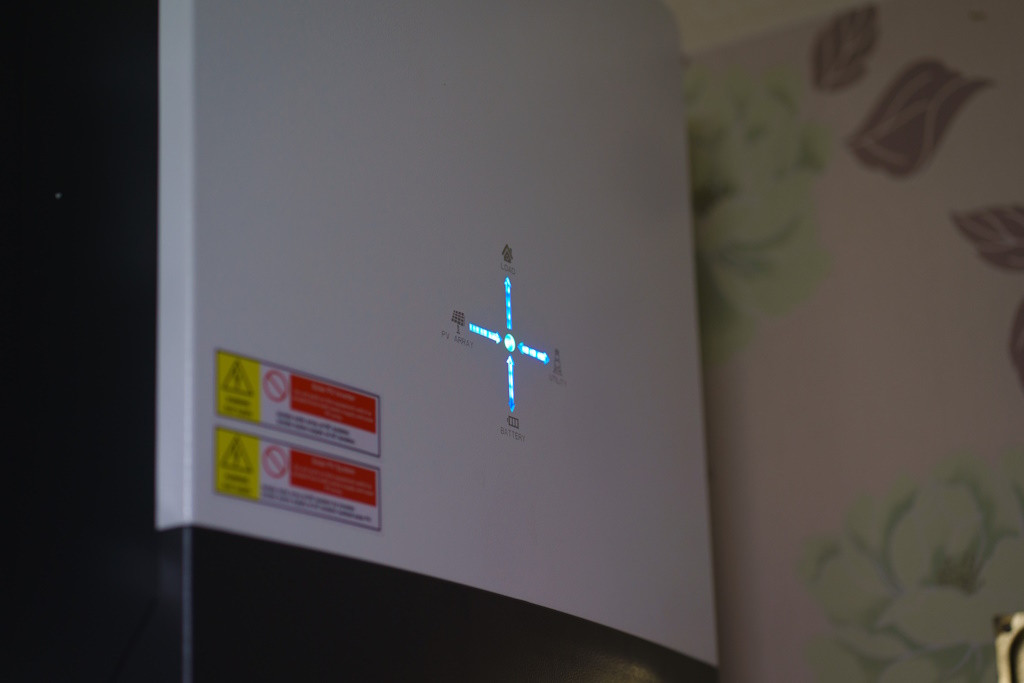
What is a hybrid inverter?
A hybrid inverter can act as both a solar inverter and battery inverter.
This means it can convert solar-generated DC electricity into AC electricity for your home and the grid, whether it’s coming directly from your solar panels or via your battery.
Before the creation of hybrid inverters, you’d need to pay for two inverters to perform these roles. Now, you can get one machine to do it all – and most people do.
Hybrid inverters are the industry standard for inverters, so in the vast majority of cases, the word ‘inverter’ refers to a hybrid inverter.
This can get confusing, especially when you see solar companies referring to ‘standard inverters’ and ‘hybrid inverters’, but as long as they can convert DC electricity coming from your panels and battery, they’re hybrid machines.
Hybrid models have become the norm thanks to the rise in popularity of batteries. 73% of solar homes in the UK have batteries, according to certification body Flexi-Orb, and they’re now rightly seen by many as a regular part of any new solar installation.
What are the types of solar panel inverter?
The two main types of inverter are string inverters and microinverters.
Certified installers will be able to fit both kinds with ease.
Let's run through what sets the two types apart, and how to choose the right one for your solar panels.
1. String inverters
A string inverter is the most common type of solar inverter used in homes.
It functions by connecting multiple solar panels together in a series, known as a 'string’. However, each model of string inverter has a maximum number of panels it can incorporate on one string, ranging from around eight to 12.
This type of inverter is usually mounted on a wall near your main electricity supply, providing a straightforward and cost-effective solution.
However, one downside of a string inverter is that if one panel is underperforming, it affects the overall output of all the others connected to it.
Your installer may use optimisers or microinverters to solve this issue – or if you have more than 12 solar panels in your system, they will probably fit more than one string inverter.
There's no maximum number of solar panels that a UK property is allowed to have, but you're unlikely to have more than three string inverters, as this would be enough for up to 36 panels.
2. Microinverters
A microinverter is a smaller, more technologically advanced alternative to a string inverter. Each solar panel in your system will get its own microinverter, which allows for the individual conversion of DC to AC on a per-panel basis.
This can offer several benefits, such as improved system performance in situations where one malfunctioning panel would otherwise drag down overall system performance.
In addition, this setup enables easier monitoring and troubleshooting of problems, as issues can be identified at an individual panel level.
If you do use microinverters and have a solar battery, the AC electricity that emerges from your panels will need to be converted back into DC electricity to be stored in your battery.
Thankfully, your battery inverter should be more than capable of handling this.
To learn more, check out our full guide to microinverters.
Which type of solar panel inverter should you choose?
When selecting a solar panel inverter, it is crucial to choose one that is best suited to your needs. Each type has its own unique features, benefits, and drawbacks.
String inverters are the most common and cost-effective solution. They are generally more affordable and easier to maintain than microinverters, making them a popular choice for many homeowners.
However, as each solar panel is connected in a series (or "string"), if one panel underperforms the overall output will be affected.
Microinverters ensure that if one panel underperforms, the others are not affected. They are ideal for situations where shading, dust, or varying angles may impact individual panels' performance.
They tend to be more expensive initially, but their long-term efficiency may be worth the extra cost.
How much do solar panel inverters cost?
Microinverters are significantly more expensive than string inverters.
If a solar panel system with 12 panels had a string inverter, it would cost around £1,400, whereas installing a microinverter on each panel would cost roughly £2,100.
However, it’s important to note that these prices are just estimates, and the actual price you pay could differ from this.
The good news is that the first time you buy a solar & battery system for your home, any inverters should come as part of the purchase and installation, so you won’t need to budget for it separately.
To learn more about the total price of going solar, check out our guide to solar panel costs.
And if you’re wondering how much a solar & battery system could save you, simply answer a few quick questions below, and we’ll give you an estimate.
What size inverter do you need?
You'll generally need an inverter with a capacity that's 75% of your solar panel system's kilowatt-peak (kWp) rating, which is how much solar energy it produces at standard test conditions.
It's vital that your inverter's kilowatt (kW) rating is lower than your system's kWp rating, otherwise it may not work some of the time.
Every inverter has a startup voltage – that is, the amount of power needed for it to turn on and start converting DC electricity from your solar panels. If your inverter is as big as your system or larger, your panels will need to generate more electricity to switch on your inverter – and some days, that may not happen.
There are companies that'll tell you to buy an inverter that's the same size as your system, but this will almost certainly leave you with an inferior setup that causes you to miss out on electricity bill savings and solar export tariff earnings.
If your solar panels produce more than your inverter's maximum capacity at any given time, your inverter will usually initiate 'clipping' – meaning it'll limit how much DC electricity it handles at that moment.
The best solar installers will try to size your inverter to make sure it turns on every day, while also trying to limit clipping as much as possible.
What’s the minimum number of solar panels an inverter needs?
The minimum number of solar panels a string inverter needs is usually three or four.
A microinverter, on the other hand, has a minimum of one solar panel.
Some microinverters can handle more than one, but most are designed for a single panel.
What is an inverter’s MPPT?
MPPT stands for Maximum Power Point Tracker, and is a piece of kit that can be added to your inverter to optimise your solar panels' output to your solar battery or the grid.
When the sun is shining brightly and directly on your roof, your solar panels may generate DC electricity at too high a voltage for your battery. An MPPT can convert this output into electricity with a low enough voltage to charge your battery effectively.
This allows you to use more of the solar electricity your panels generate, instead of lots of it being lost and expelled from your panels as heat.
Most inverters have a maximum of three MPPTs, and often fewer. A certified installer will analyse your needs and make a recommendation that takes into account the various different factors involved.
If your inverter has the same number of MPPTs as it does strings, and your roof has an area that's more often shaded than the rest, your installer should put the set of more shaded panels on one string, with one MPPT.
The less shaded panels should then go on separate strings and MPPTs. Since the panels in each set will generate roughly the same as the other panels in their set, this will allow each MPPT to work efficiently, and maximise the solar electricity sent to your battery.
How efficient is a solar panel inverter?
A solar panel inverter is typically 93% to 98% efficient at turning DC electricity into AC electricity, though never 100%, as they need some DC electricity to function.
This is a reassuringly high efficiency level – though that range is still large enough that you should make sure you get a high-quality model and an MPPT, which can both shift your system's output nearer to 98%.
Depending on how much shading there is on your roof, you may be able to boost your system's efficiency with microinverters.
However, the ideal situation is generally a completely unshaded roof that uses string inverters, so it largely depends on your situation.
Inverters are most efficient when working at their maximum capacity, so it's best if your solar panels can produce enough electricity to reach this point – but not too much more, as even with MPPTs you'll still lose some electricity to heat.
Where should solar panel inverters be installed?
Solar panel inverters should be installed one to two metres away from your storage battery.
Both inverters and batteries should ideally be placed outside or in your garage, which your installer will know if they’re aware of the most recent guidelines, outlined in Publicly Available Specification (PAS) 63100.
It’s best to keep them relatively near to your fuse box as well, as it’ll minimise the wiring you need, which reduces energy losses and electrical issues.
Wherever your inverter and battery end up, the space should be properly ventilated and shaded to ensure neither machine overheats.
Direct exposure to sunlight can increase the operating temperature of the inverter, affecting its efficiency and potentially reducing its lifespan.
Choosing a location that is easily accessible for maintenance and monitoring is also a good idea.
To ensure your installation meets the latest safety regulations, it’s wise to hire one of the best solar installers in the UK.
To learn more, check out our guide to how solar panels are installed.
Do solar panel inverters make any noise?
Since your inverter will likely be outside or in your garage, you'll almost certainly never hear it unless you're standing right next to it.
An inverter will typically hum at a maximum of 30 decibels (dB), meaning at its worst, it'll be as loud as nearby whispering. Imagine a practically silent library, and you’ll be in the right ballpark.
Some older models may be louder, but are unlikely to emit any noise over 45dB, which is roughly as noisy as a quiet household room.
How long do solar panel inverters last?
The two main types of solar inverter have varying lifespans.
String inverters handle the electricity of an entire solar panel array and typically come with a 10-year or 12-year warranty. In most cases, a string inverter will need replacing at some point during the lifespan of a solar panel system.
Microinverters often have warranties of up to 25 years, thanks to being less prone to heat damage and not having to handle the electricity of an entire array.
To ensure your solar inverter lasts as long as possible, arrange for periodic inspections and cleans.
Most solar panel inverters tend to need replacing after 10-12 years. The chart below shows an inverter's chance of failure at each year of its life, and you can see that this dramatically increases after the 12-year mark.
Fortunately, every Sunsave Plus subscription is backed by the Sunsave Guarantee, which includes a free, out-of-warranty replacement inverter once it's required.
Do solar panel inverters require any maintenance?
Solar panel inverters generally require minimal maintenance, but it's important to perform some routine checks. These include:
- Visual inspection for any signs of damage or wear
- Wiping the exterior of the inverter with a cloth every six months, to avoid build-up of dust or debris
- Making sure there are no new obstructions blocking the ventilation openings
- Regularly checking your monitoring app for any irregularities or performance issues
- Scheduling periodic inspections by a qualified technician who can perform more in-depth checks
It's crucial that you regularly run through this list, as your inverter is a vital part of your system, and the most likely section to malfunction.
However, if your inverter heats up, don't worry – this is normal, and simply means it's doing its job.
If it does overheat, which is rare but possible, the safety mechanisms in the machine will ensure it shuts down. If this happens, contact a solar professional.
With Sunsave Plus, your system will be covered by the Sunsave Guarantee, which means you’ll receive 24/7 monitoring and maintenance to deal with any irregularities or performance issues.
Next steps
Solar inverters are a crucial part of your solar panel system, converting the DC electricity generated by your solar panels into usable AC electricity to power your home and sell to the grid.
There are several types of inverters, each with their own pros and cons, as well as varying prices. It’s always a good idea to consult a solar professional who can advise on the best type of inverter for you.
If you'd like to know how much a solar & battery system could save you, just answer a few quick questions below, and we’ll calculate an estimate.
Solar panel inverters: FAQs
Related articles
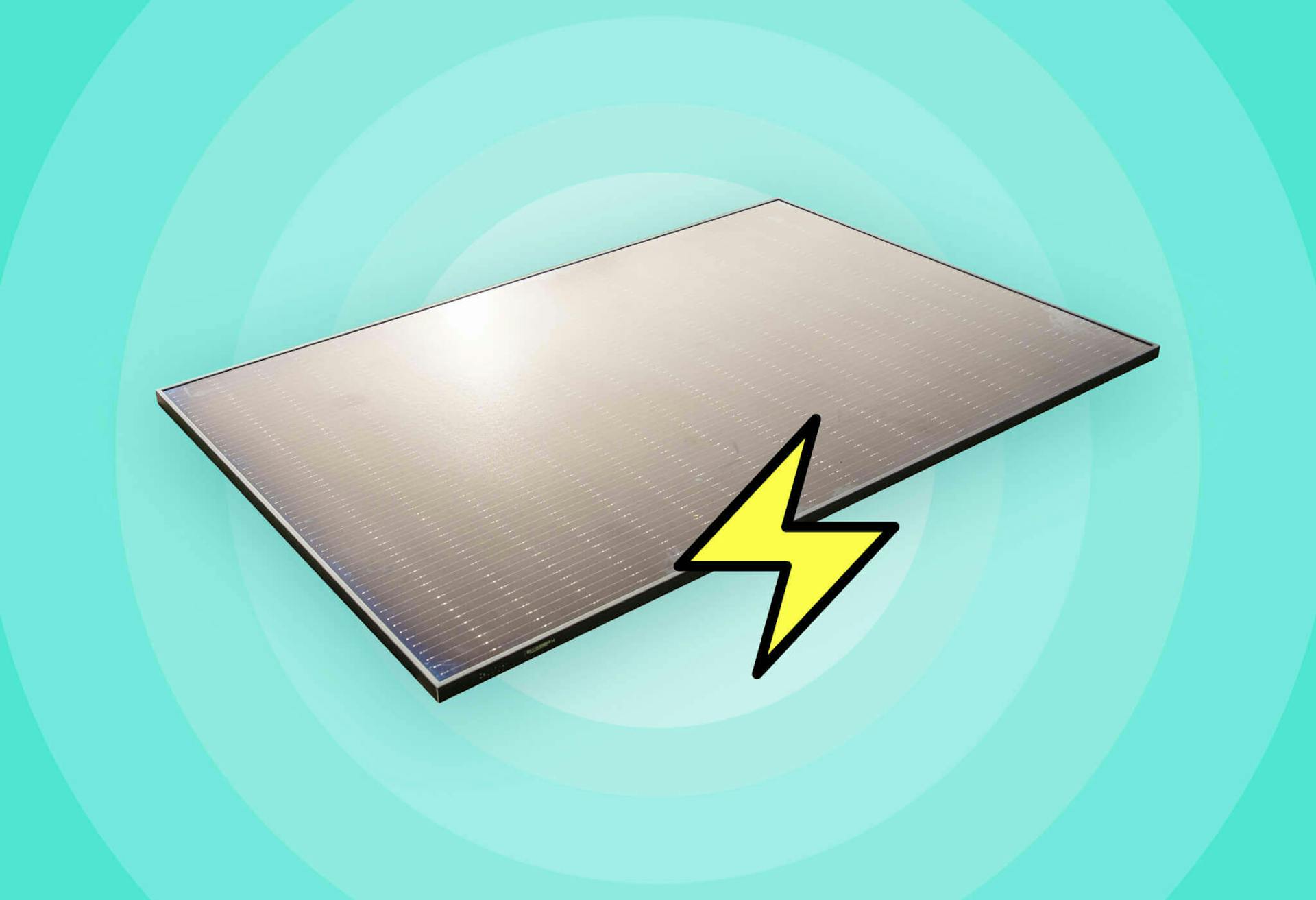
How much energy do solar panels produce?
Read full story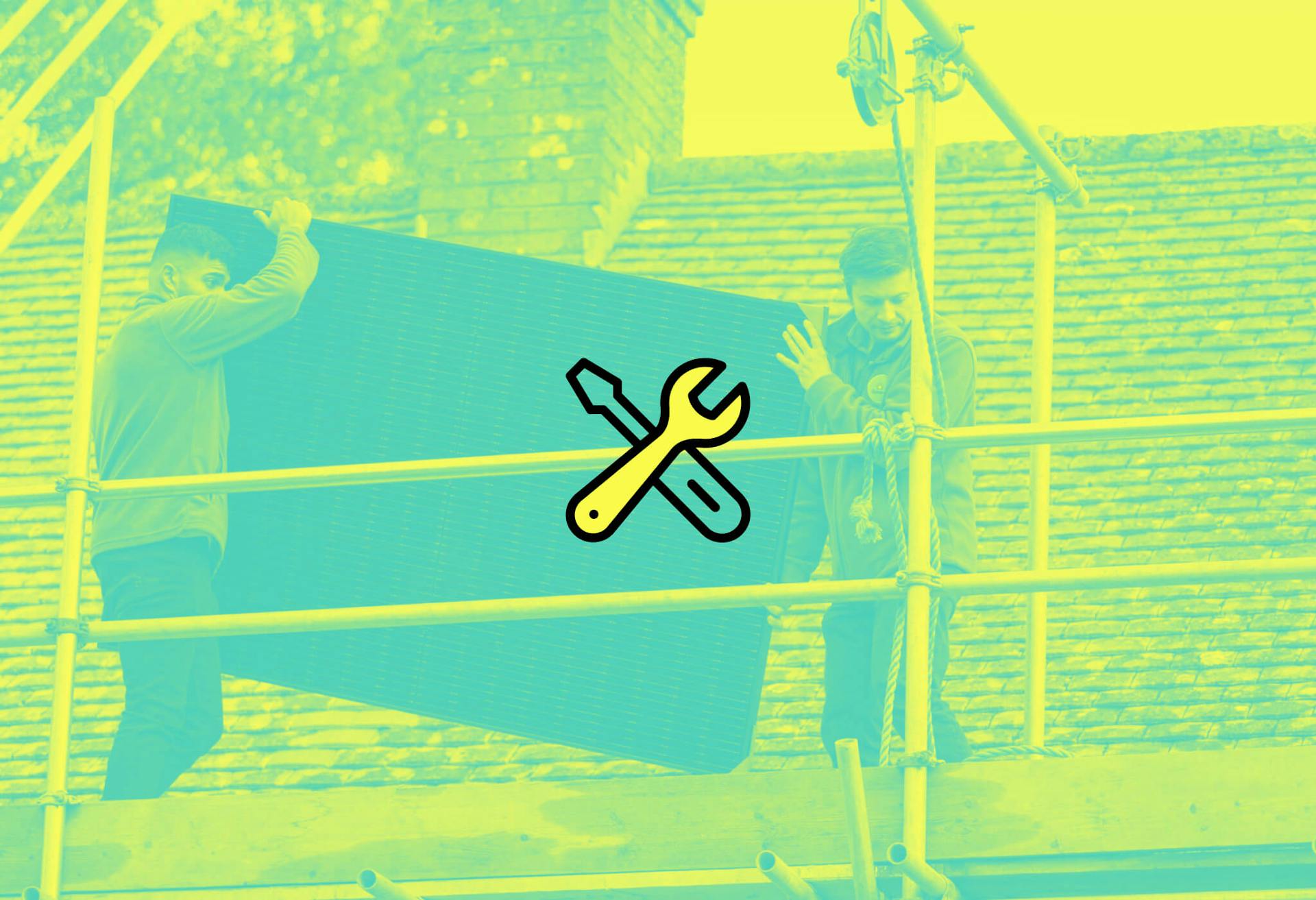
How are solar panels installed?
Read full story
How many solar panels do I need?
Read full story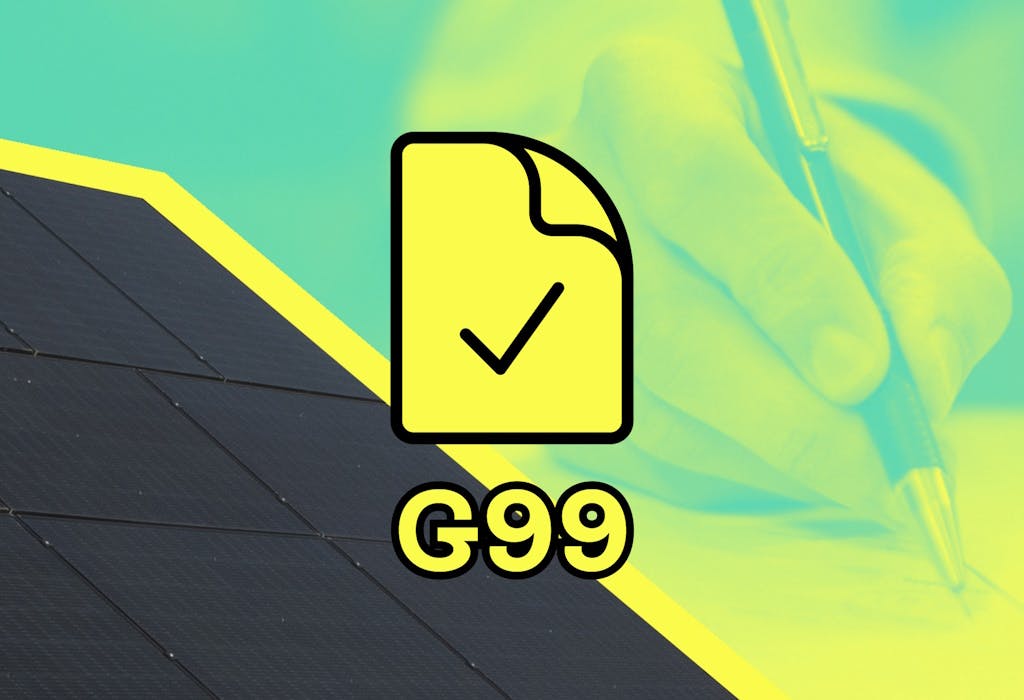
DNO solar applications: the expert guide
Read full story
Written byJosh Jackman
Josh has written about the rapid rise of home solar for the past six years. His data-driven work has been featured in United Nations and World Health Organisation documents, as well as publications including The Eco Experts, Financial Times, The Independent, The Telegraph, The Times, and The Sun. Josh has also been interviewed as a renewables expert on BBC One’s Rip-Off Britain, ITV1’s Tonight show, and BBC Radio 4 and 5.